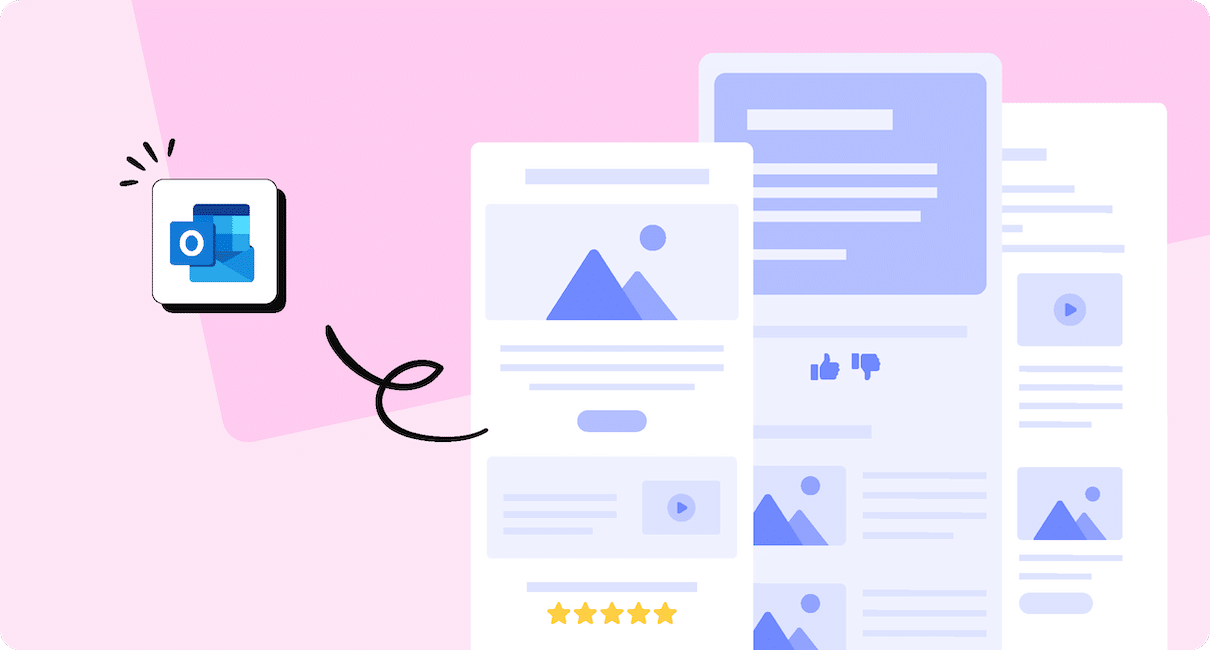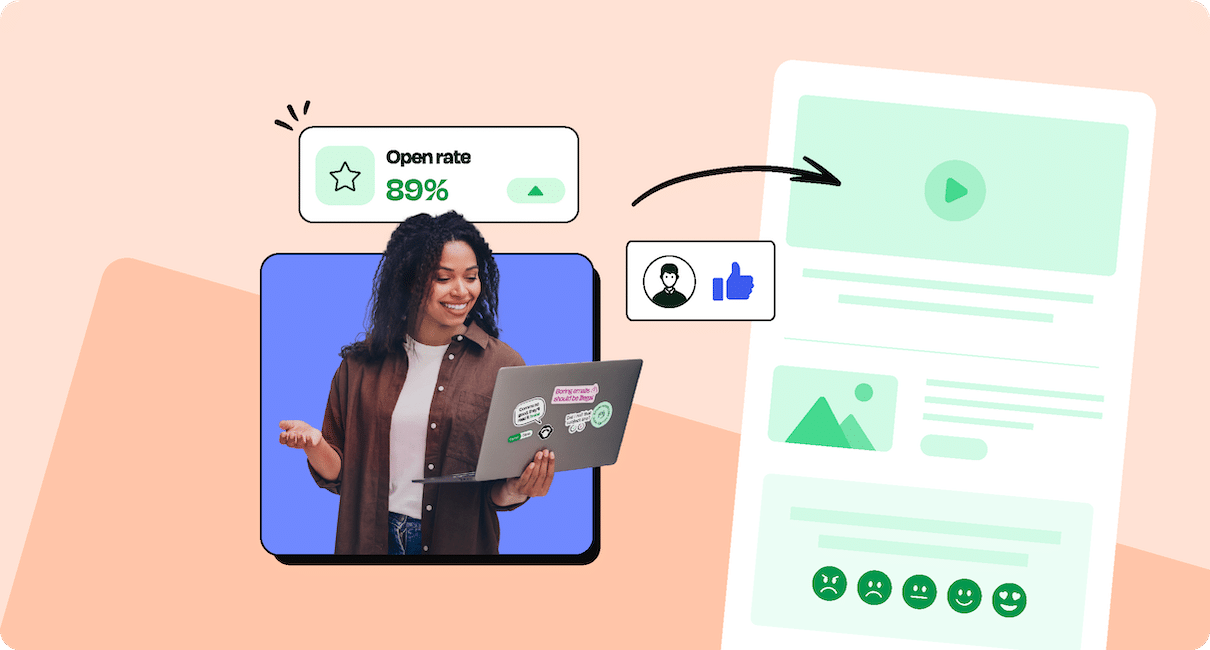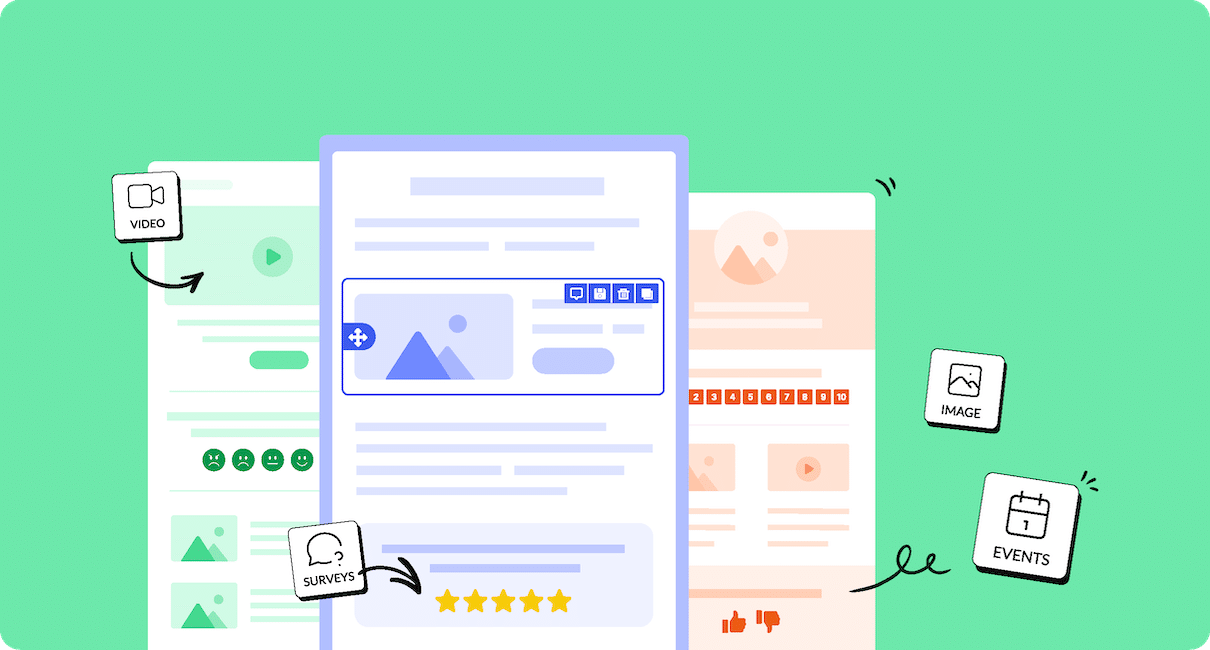Make your internal communications more inclusive and efficient with employee newsletter translation! Gain practical tips and tools for easy newsletter translation to connect with global employees.
Have you ever wondered how to ensure that your employee newsletters are understood by everyone, regardless of their language? Chances are, if your organization has offices worldwide, you’ve had to answer this question. To engage with all employees, you’ve got to bake email translation into your strategy.
While there are many ways to bridge communication gaps, sending a high-impact, visual, and engaging newsletter in your employee’s native language goes a long way. Offering email newsletter language preferences to every employee, regardless of your company’s physical location, increases the stickiness and engagement of your newsletters. Our translation feature is one of the many benefits to adopting employee newsletter software at your company.
Read along as we cover how to translate your employee newsletter and share the most effective tips for employee newsletter translation. As you embrace the power of inclusive communication, you’ll take your internal communications plan to the next level.
Ready to create interactive employee newsletters with ease? You can with ContactMonkey’s newsletter solution.
Take a self-guided tour of ContactMonkey
See how our key features can streamline your internal communications.
Take product tour

What is Employee Newsletter Translation?
Gone are the days of one-size-fits-all communications. The modern workforce is increasingly global and distributed. For this reason, staff newsletter translation is becoming a must for internal communicators.
So, what exactly is employee newsletter translation? It’s the process of converting internal company newsletters and communications into multiple languages to reach a diverse, multinational workforce. This ensures that employees who speak different languages can access important information, updates, and messages from the organization.
Internal email translation can be done manually, through a third-party translation tool, or with the help of internal communications software with multilingual email capabilities.
Why Is Employee Newsletter Translation Important?
Employee newsletters are important for team alignment, strengthening company vision, gaining employee feedback, and building company culture. By translating newsletters into employee-preferred languages, companies bridge cultural gaps, foster a more inclusive environment, and improve employee engagement.
A multilingual internal communication strategy ensures that important information is accessible, which can improve employee productivity and satisfaction. While it sounds simple, internal email translation is a small gesture that goes the distance with dispersed, in-house or remote employees. Ultimately, corporate translation creates a level playing field for a diverse workforce and furthers the reach of your internal communications.
Here are 3 top reasons why newsletter translation wins:
- Unite global and multilingual teams – Corporate email translation ensures consistent messaging that resonates with employees. An untranslated employee communication may leave your international workers feeling disconnected or uninformed. Inclusive organizations leverage content translation to reduce communication barriers.
- Improve employee engagement and understanding – Reading technical or corporate content in a second language can be challenging. Investing in high-quality employee newsletter translation boosts comprehension and encourages two-way conversations and valuable employee feedback.
- Demonstrate inclusivity as a core company value – Delivering key messages only in the company’s dominant language can send the wrong signal. This is especially true if your organization has global offices. Email translation conveys that you value the entire team regardless of location or native language. Plus, efforts to promote diversity, equity, and inclusion positively impact satisfaction, retention, and employer branding.
7 Best Practices for Effective Employee Newsletter Translation
Now that we know why employee newsletter translation is essential to improving internal communication let’s examine how to translate your staff newsletter effectively.
Here are seven best practices for translating internal newsletters effectively:
1. Integrate with Multi-Language Internal Email Software
Creating multilingual internal emails without the right tools or software can be time-consuming. Using an internal email tool like ContactMonkey that integrates with Outlook or Gmail simplifies the process. ContactMonkey’s multilingual email feature allows you to design a single email newsletter template.
All language versions are included in a single email, enabling employees to select their preferred language with one click. This eliminates contact list segmentation, multiple sends, and siloed email campaigns with unified tracking data.
2. Segment Email List by Preferred Language
Instead of sending multiple versions of the same internal email in different languages, focus on segmenting your communication lists by preferred language rather than geographic location. Audience segmentation features filtered by self-elected language preferences keep directories personalized and updated without additional lift.
Language-filtered employee contact lists will ensure that employees receive messages in their native language, even accommodating preference (or location) changes automatically.
3. Vary Content Translation Services
Selecting the best method for employee newsletter translation—whether using a translation tool, in-house translators, or third-party services—can be challenging. Automated tools are quick and cost-effective but may lack precision. Third-party services offer professional translations but might not fully capture your organization’s culture. In-house translators ensure high-quality, accurate translations but can be costly if used infrequently.
The best choice depends on how often you need content translation, and you might benefit from alternating between methods and language translation tools.
Check out these employee newsletter templates for inspiration on crafting compelling content in any language.
4. Leverage AI Tools for Translation
AI translation tools can be a game-changer for organizations with high-volume translation needs. These platforms use machine learning to quickly translate text into multiple languages simultaneously.
While not always perfect, AI software for language translation has come a long way in recent years. These tools are cost-effective for getting your corporate translations 75% of the way there. Then, you can layer in a lighter manual review to get email newsletter content out more quickly.
Learn more about writing engaging employee newsletters that captivate readers in any language.
5. Offer Language Preferences to Employees
As we’ve mentioned, one size rarely fits all. This is especially true when it comes to language or communication preferences. Give your employees the power to choose their preferred language. This small gesture can go a long way in boosting engagement and making your global team feel valued.
With internal email software like ContactMonkey, employees can select to receive content translated into over 100 different languages. This way, even if your employee is located in North America but prefers to read in their native language, this accommodation can be made.
6. Regularly Update Translation Glossaries
Consistency is key to clear communication, especially across languages. Maintain a centralized glossary of company-specific terms, acronyms, and phrases to ensure they’re translated the same way every time.
Update your employee newsletter translation glossary regularly as new terminology emerges, and share it with your translation team for reference. Keep your content fresh, regardless of language, with these employee newsletter ideas for every month of the year.
Watch ContactMonkey LIVE in action
Join live demo

7. Utilize Native Language Feedback
Your employees are the ultimate judges of your translation quality. Regularly seek their feedback through employee engagement surveys built into your translated newsletter. Translating internal emails that house pulse surveys into the employees’ first languages will help to capture the most accurate responses.
When employees receive employee engagement, wellness, and satisfaction surveys in their native language, your organization will receive more actionable insights. Quality employee feedback helps to improve workplace culture, increase employee satisfaction, and foster deeper engagement.
Further reading: Our employee newsletter checklist to ensure that you don’t miss any key steps to launching an effective newsletter.
5 Tips for Writing Multilingual Internal Emails
An email newsletter translated into multiple languages should be crafted differently. Aim to be concise, leverage compelling visuals (or closed-caption video with subtitles), and use short, direct language. Avoid colloquialisms, puns, and nuances jokes or references.
1. Simplify your language
- Use clear, straightforward language to facilitate newsletter translation.
- Avoid idiomatic expressions and special characters that may not translate well.
2. Consider cultural differences
- Keep content culturally neutral to avoid misunderstandings.
- Adjust messages for different cultural contexts.
3. Thoughtful use of images
- Avoid embedding text in images to ease translation efforts.
- Ensure images have multilingual alt text for accessibility.
4. Utilize translation tools
- Use tools like ContactMonkey for seamless Outlook email translation.
- Leverage AI-powered tools to translate employee and staff newsletters accurately.
5. Streamline the translation process
- Design your newsletter in one language first, then translate for consistency.
- Track engagement across all language versions by leveraging integrated features that allow you to send multiple languages simultaneously under one campaign.


Translate Your Employee Newsletter With ContactMonkey
ContactMonkey recognizes this need for unified communications across languages and offers a multilingual email feature. ContactMonkey gives you access to top email translation tools to simplify the whole process. Moreover, you can send emails in over 100 languages and send a single staff newsletter in up to four languages at once.
Why ContactMonkey for employee newsletter translation?
- Fast Multi-Language Email Creation: Create multiple language versions of the same email by simply copying and pasting from your preferred translation text.
- Easy Universal Editing: Edits made to one email automatically apply to up to four other language versions.
- Seamless Contact List Management: Built-in language filtering allows contacts to choose their preferred language. There is no need for separate contact lists based on location and language.
- All-in-One Campaign Stats: Track statistics for every language version from a single dashboard and send up to four language versions. No more fragmented data across languages and locations!
Here’s how to create multi-lingual emails with ContactMonkey:
- Enable Multi-Language Emails:
- Contact your ContactMonkey Admin to enable the Multi-Language Emails feature in Settings > Email Management.
- Then, configure the languages you want to add to future emails.
- Create a New Email:
- Go to the Emails tab and click “Create New Email”.
- Choose “Start from Scratch” and toggle the Multi-Language email button to “on”.
- Set Up Your Email:
- Name your email and click the “Create” button to launch the email builder.
- Generate the email as usual, then select a different language version from the top drop-down menu to edit. You can input up to four language versions at once.
- Send Your Translated Email and Measure
- Send your multilingual employee email regularly.
- Track email performance and newsletter analytics in the dashboard under a single campaign.
Read more about ContactMonkey’s latest update and expansion to create emails in multiple languages (in a single send).
Effective communication is crucial for employee engagement and productivity, especially in a multilingual workforce. However, without a staff newsletter translation tool or the right email integrations, translating employee newsletters is time-consuming, clunky, and prone to errors.
Book a free demo to utilize ContactMonkey’s multilingual email feature and see how easy employee newsletter translation can be. Your global workforce will thank you.





